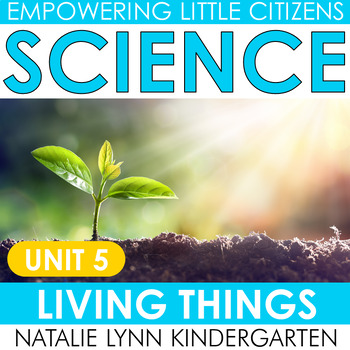Kindergarten + 1st Grade Science UNIT 5 Living and Nonliving Things and Plants
- Zip
- Google Apps™

What educators are saying
Also included in
- The Empowering Little Citizens Kindergarten Science Curriculum includes everything you need for a meaningful science block in Kindergarten (and first grade too)! Science digital teaching slides are also included for a less prep teaching option.These units are not marked with a grade level so you arePrice $30.00Original Price $94.00Save $64.00
Description
Hands-on and engaging science lessons have never been easier! In Unit 5 Living Things, students will explore living and nonliving things, the needs of living things, plants, plant needs, and the plant life cycle.
The Empowering Little Citizens Kindergarten Science Curriculum includes everything you need for a meaningful science block in Kindergarten (and first grade science too)!
SAVE BIG with the Science Curriculum for the Year BUNDLE!
Includes Science digital teaching slides for a less prep option!
These units are not marked with a grade level so you are not limited to Kindergarten use. While designed with Kindergarten science in mind, these units would also work well as a 1st grade science curriculum.
What is included in this science unit:
- 11 science lessons with full lesson plans
- 11 original nonfiction books
- Science digital teaching sides for PowerPoint™ and Google Slides™
- Student science worksheets + printables
- Science vocabulary cards
- Activities and experiments
- End of unit assessment
LESSON OVERVIEWS:
Unit 5: Living Things
- Living and Nonliving Things
- Characteristics of Living Things
- Needs of Living Things
- How Living Things Grow and Change (human life cycle)
- Living and Extinct (fossils)
- The Parts of a Plant
- The Needs of a Plant
- How Plants Make Food (photosynthesis)
- Seeds
- The Life Cycle of a Plant
- Seasons and Plants (adaptations)






